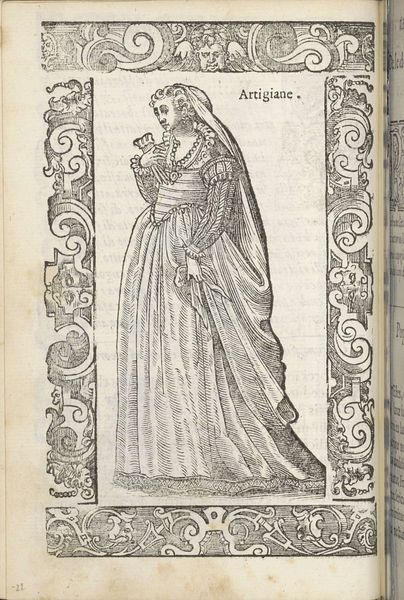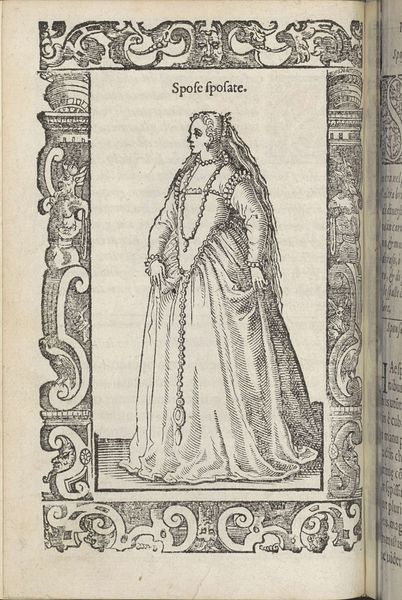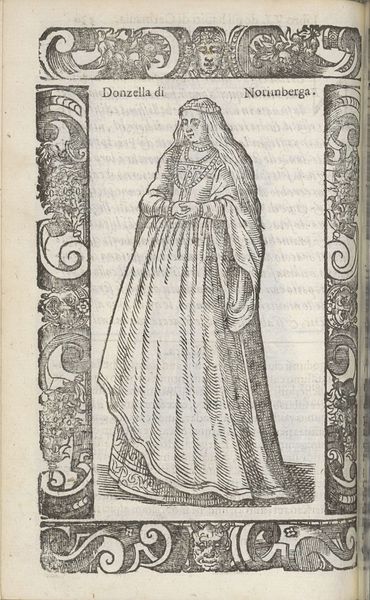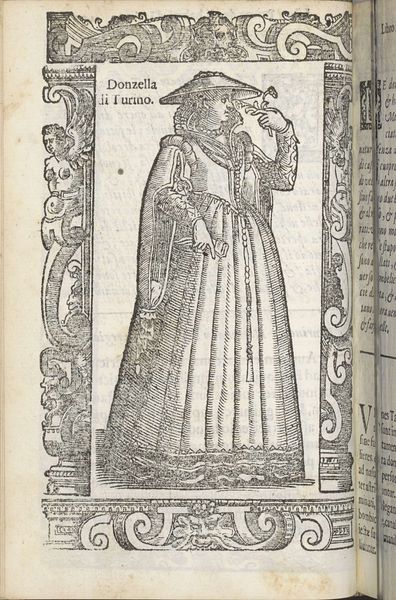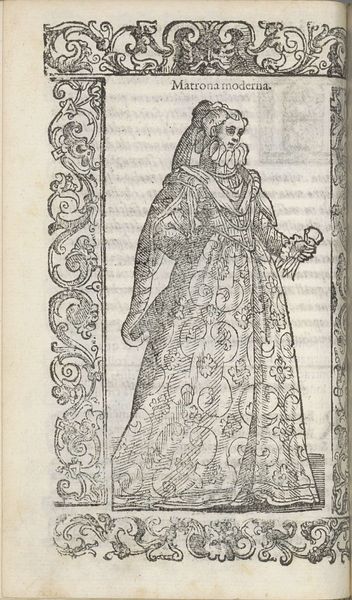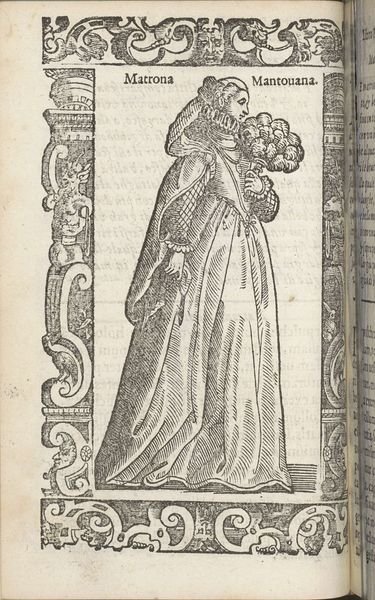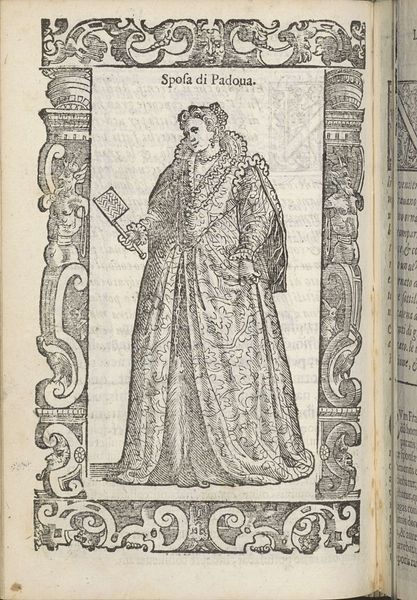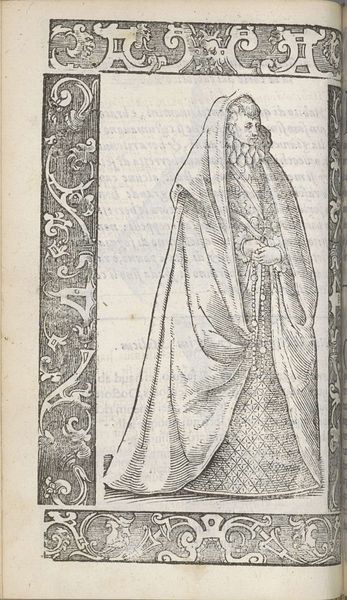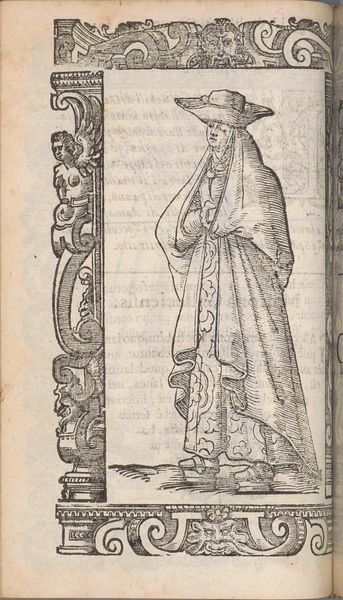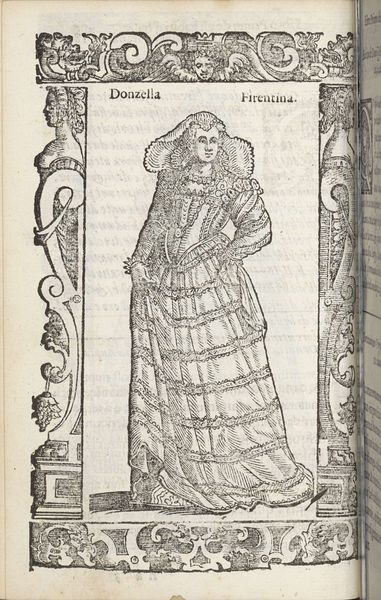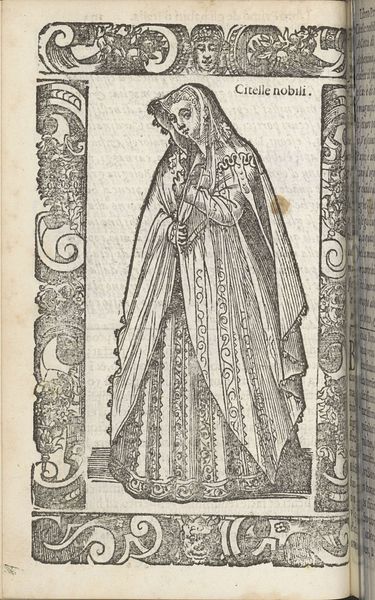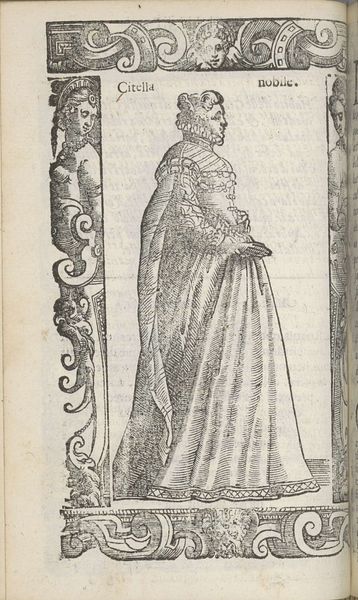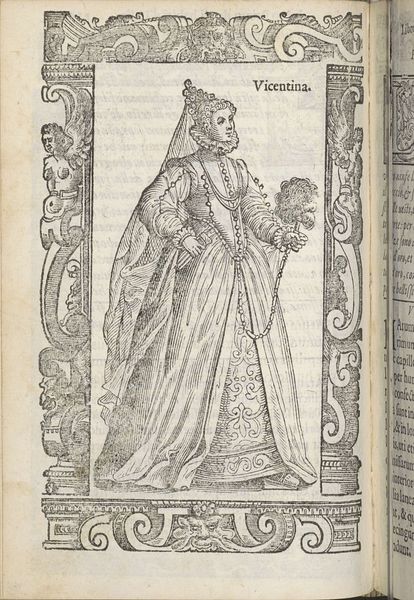
drawing, paper, ink
#
portrait
#
drawing
#
mannerism
#
paper
#
ink
#
genre-painting
#
italian-renaissance
Dimensions: height 167 mm, width 125 mm
Copyright: Rijks Museum: Open Domain
Curator: Looking at "Spose del Friuli" created in 1598 by Christoph Krieger, what’s your initial take? Editor: Intricate! All those fine lines and embellishments…It makes me feel almost claustrophobic, but the woman, though rigidly posed, radiates a quiet strength. It's intriguing. Curator: The drawing utilizes ink on paper, embodying the Mannerist style of the period. Considering it as an ink drawing, how does its existence reflect broader social factors? Editor: Well, the medium itself tells a story. Ink on paper makes it more portable, easily reproducible, a step toward wider distribution. Is it not unlike a primitive fashion plate from the late Renaissance? These portraits could influence local taste, demonstrating what constituted ‘high fashion’. Curator: Absolutely. Moreover, its genre as a portrait gives insight to the labor of artistic production—Krieger might have made his living drawing for books as an illustrative tradesman. How do the materials and techniques inform your own reflection on this art? Editor: I’m charmed by the precision, by the time invested in rendering every ruffle and fold, transforming everyday wear to something ornate and codified, reflective of a social obsession with fashion and appearance. This drawing preserves a moment, yes, but also captures cultural codes in remarkable clarity. Curator: Yes. Looking at the material execution, we see both craft and intention melded. The ink lines create texture, form, and pattern and reflect Italian Renaissance tastes. The use of available drawing material also implies the necessity of visual documentation. What stands out to you most, re-examining it in light of materials and cultural value? Editor: It is a record of a trend, a cultural moment of elaborate attire caught mid-swing in the annals of social history; each detail painstakingly engraved by labor and preserved across time, which still speaks volumes even today. This ‘Friuli bride’ somehow speaks of larger questions that all resonate still! Curator: True. The art’s materiality allows us to infer much about social status and Renaissance artistic techniques. I will be sure to examine more genre drawings. Editor: And, next time, perhaps let’s see who wore these things!
Comments
No comments
Be the first to comment and join the conversation on the ultimate creative platform.

